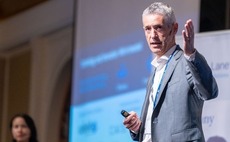
Asia's LP landscape: North to south

Pools of institutional – and less institutional – capital in Asia are deepening, but it remains a multi-speed market with some investors just beginning their alternatives journey and others achieving maturity
JAPAN
Few big beasts and a very long tail
Over a decade after it announced plans to enter the alternatives space, Japan's Government Pension Investment Fund (GPIF) has made its first large commitments to funds on a direct basis. TA Associates, Hellman & Friedman, CVC Capital Partners, EQT, and The Blackstone Group's real estate strategy had shared a pot of USD 2.65bn as of July.
GPIF, the world's largest pension fund with JPY 219.3trn (USD 1.46bn) in assets, is still a fixed income-heavy investor with a 1.54% allocation to alternatives. And its private equity programme is for the most part overseen by gatekeepers and fund-of-funds managers such as Neuberger Berman, Mitsubishi UFJ Trust & Banking Corporation, Hamilton Lane, and Alternative Investment Capital.
Yet some industry participants see evidence of evolution. "They wanted to learn from these advisors – how to conduct research and perform due diligence and monitoring – and over the last five years they've done that," said Tuck Furuya, CEO of Ark Totan Alternative, a Japan-based placement agent and gatekeeper, who notes that GPIF's private equity team now numbers about a half dozen.
Does he believe others will follow suit? In short, no. Japan remains the land of the USD 10m-USD 30m cheque for PE funds, rising to USD 50m in exceptional cases. GPIF is unusual among domestic pension funds in being a qualified institutional investor (QII), which means it can go into funds directly. Banks and insurers have the same status, but this doesn't translate into a gatekeeper-free approach.
University endowment Japan Science & Technology Agency (JST), the latest large-cap newcomer, put JPY 9.9trn to work in its first 12 months of operation. Alternatives received JPY 64.3bn – or 0.6% of the overall portfolio – with private equity accounting for more than half. Neuberger, Sumitomo Mitsui Trust Bank, and Mitsubishi UFJ were responsible for the commitments.
"JST said it would start quickly and use gatekeepers for that, but bring the programme in-house as quickly as possible when they have built the team and capabilities," said a placement agent with a global firm. He is dubious about the prospect of JST writing USD 100m cheques.
At the same time, Japan has some longstanding, sophisticated private equity investors with relatively mature portfolios. The JPY 12.6trn Pension Fund Association (PFA) is one of them. It takes meetings with visiting GPs, the agent added, but the portfolio has essentially become one out, one in. Overallocation is also a challenge. PFA hiked its PE allocation from 4% to 7%, but yen depreciation weighs on the budget.
Japan Post Bank (JPB) is also increasingly placed in the "mature" category. Private equity funds exposure increased 75% to JPY 5.6trn in the 2023 financial year, largely due to a change in accounting standards. However, JPB reached its target of JPY 10.1trn in strategic investment area holdings – which include private equity and real estate funds and other assets – three years early.
JPB regards its PE programme as a success, noting last year that it had generated a positive return in each of the five years through 2022. This gives hope to GPs seeking to crack the broader market. Tapping the long tail of Japanese LPs is time-consuming, but once sold on a proposition they are seen a reasonably loyal. Moreover, they don't hanker for co-investment.
Eight government pension funds, each one holding at least USD 30bn in assets, sit below GPIF but they mostly allocate through fund-of-funds. Insurers are consistent fixtures on marketing itineraries, with some tentatively stepping into the USD 50m cheque space. The likes of Nippon Life, Dai-ichi Life, and Meiji Yasuda Life also have staff working out of New York and London with some degree of autonomy.
Then come the asset managers and gatekeepers that either aggregate or direct allocations from that long tail of corporate pensions and financial institutions. DBJ Asset Management, Tokio Marine Asset Management and Nissay Asset Management, Asset Management One, and Norinchukin Zenkyoren Asset Management – a tie-up between Norinchukin Bank and a local pension – feature in the former cohort.
Sitting in the latter category, or operating between both worlds, are Mitsubishi UFJ, Sumitomo Mitsui, Mizuho Trust & Banking, AIC, and Ark Totan. "If you meet an asset manager and there's interest in your strategy, you get to a lot of underlying institutional LPs you wouldn't be able to access directly," said Vincent Ng, a partner at placement agent Atlantic Pacific Capital.
SOUTH KOREA
Keen to commit, when fully budgeted
South Korea's LP community is likened to a more advanced version of Japan – and most global multi-strategy managers and fund-of-funds started placing fundraisers in Seoul before Tokyo. There is a big head, but it is more seasoned and consistent than GPIF. There is a long tail, but it doesn't require quite as much patient nurturing, and commitments exceed the USD 10m-USD 30m range.
The country's National Pension Service (NPS) has KRW 997.4trn (USD 762bn) in assets, a 16.1% alternatives allocation, and the capacity to write cheques of USD 250m and above. Korea Investment Corporation, which has USD 16bn invested in global private equity out of an overall portfolio of USD 169.3bn, is regarded as more flexible but still capable of playing in USD 100m-plus territory.
Both now have branch offices in the US, UK, and Singapore, which means the first point of contact for foreign managers might not be in Seoul. "The overseas offices do a lot of the initial filtering and team members will sit on the investment committee, but fund managers still have to go through headquarters," said an investor relations professional with a US mid-market private equity firm.
Even for managers visiting Korea, meetings with NPS don't take place in Seoul – apart from on Mondays and Fridays when investment managers return to the capital from their base of operations 200 kilometres to the south in Jeonju. Korea Post was relocated to Sejong, 130 km away in the same direction as part of the same decentralisation initiative.
"The logistics are different from Japan, you can't do as many meetings in a day, especially if you have to leave Seoul," said Niklas Amundsson, a partner at placement agent Monument Group. As inconveniences go, it fades in comparison to the rigidity of Korea's request for proposal (RFP) culture, whereby LPs request submissions – in Korean – for very specific mandates in narrow timeframes.
"The cheques can be large, but you must get the timing right. If they say second quarter of 2024, US mid-market fund of USD 3bn-USD 5bn, generalist but with a healthcare bias, that's what they mean."
A second global placement agent estimates he covers about 40 LPs in Korea that can make private equity fund commitments of USD 20m-USD 75m, and even more that want credit and infrastructure. These are often affiliates of a small cluster of conglomerates: the likes of Hanwha Group, Samsung, and Hyundai Group have asset management businesses, life insurers, and marine and fire insurers.
According to Steve Kim, CEO of Seoul-based alternative investment advisory firm Castling Capital, asset managers don't so much aggregate capital into fund-of-funds as allow groups with limited bandwidth to invest through their custodian accounts and then handle the administration for a flat fee.
"The deal comes to the LP, the LP needs a wrapper, and the asset management company provides that service, which includes currency hedging, cash flow management, and reporting," he said. "This means some asset managers are a waste of time, but some can be the gateway to deeper relationships."
Numerous other pension funds sit below NPS – Korea Teachers' Pension, Public Officials Benefit Association (POBA), Korean Teachers' Credit Union (KTCU) – that have been reasonably consistent allocators to alternatives. Last year, though, they were left without budget.
Pension funds are structured more like cooperatives, observed Jason Shin, a managing partner at local private equity firm VIG Partners. Members deposit money but they can borrow it as well, and as rising interest rates pushed up the cost of financing, it was possible to borrow at a lower rate from the cooperatives. "This drained their time and resources," Shin said.
Investment programmes were halted, or commitment sizes were drastically reduced. It was always going to be a temporary phenomenon, but some pension funds are still back to where they were before.
"It might be a gating issue for some groups, but they wouldn't present it like that because they want to look at funds for next year," Kim added. "They are cautiously looking forward to next year. After the Lunar New Year, they will really start thinking about their coming allocations."
GREATER CHINA
Losing some of its international shine
Seven years ago, it seemed only a matter of time before mainland Chinese insurers built on their strong presence in domestic private equity and became significant players in the asset class globally. There was also growing interest in nascent private wealth platforms.
Neither channel has delivered on its potential. The handful of insurers global GPs were targeting – including the likes of Ping An Insurance and China Life Insurance that have pools of capital offshore – are less prominent. Placement agents blame a combination of regulatory obstacles, notably around foreign exchange, and a strategic imperative to become asset managers, or GPs, onshore.
Meanwhile, wealth platforms like Gopher Active Management and CreditEase have also faded. "Long-term fee-based alternatives is something the government wants to push but the high net worth population isn't there yet," said one Asia-based IR professional with a global private equity firm. "And most of those people made their money in real estate, which is in trouble now."
The country's two sovereign wealth funds are still thriving. China Investment Corporation (CIC) had an international portfolio of nearly USD 600bn as of end-2021, with a 47% allocation to alternatives; State Administration of Foreign Exchange (SAFE) had non-domestic investment assets of USD 1.03trn as of end-2022. Both sit in the relatively exclusive club of Asian LPs able to write cheques of USD 250m-plus.
These behemoths are commonly – but not exclusively – found in large-cap brand-name funds. A fundraising trip to Beijing might also include meetings with the fund-of-funds unit of China International Capital Corporation (CICC) and Silk Road Fund, which makes direct and fund commitments.
The bigger question is whether GPs want Chinese capital. "US managers stopped asking for China before US LPs stopped asking for China funds. In the last five years, we've not had a client that proactively wanted to reach out to China," said Amundsson of Monument Group.
"With new US regulations and geopolitics, it has gotten worse in the past year. But in an environment where you can't choose your investors like you used to, has the bar for taking Chinese money changed?"
The consensus view is that foreign GPs are comfortable taking re-ups from the likes of CIC. Marketing in China for the first time is a major obstacle. Ng of Atlantic Pacific noted that half of the US managers he works with don't want Chinese money and the other half don't mind. A third agent said he has European GP clients that now cap China fund exposure at 10%.
"People need to think about geopolitics when they are raising capital. What is trade sanctions kick off and you've got an investor that cannot meet a capital call?" said Richard Kunzer, co-founder of US mid-market private equity firm Integrum Holdings. "You never want to have one or two LPs making up a significantly large chunk of your money, whether they are from China, Europe, or the US."
For GPs that touch on areas like defence, China is off-limits – and in some cases, Hong Kong as well. For generalists, Hong Kong is unchanged. Hong Kong Monetary Authority (HKMA) is the big fish: its HKD 4trn (USD 512bn) Exchange Fund was 9.25% invested in private equity as of end-2022.
Insurers such as AIA and FWD are capable of writing USD 50m-USD 100m cheques, and Hong Kong Jockey Club could go larger on the rare occasions its interest is piqued, according to industry participants. About 20 family offices are seen as realistic targets, although only half are described as mature, professionally managed, and able to commit USD 10-USD 30m to global PE funds on a consistent basis.
In Taiwan, six insurers dominate the LP community, led by Cathay Life and Fubon Life. Normally a reliable source of cheques of up to USD 100m, they have been hamstrung by overallocation in recent years, with some forced to trim portfolios via the secondary market after breaching fiduciary limits. Though these issues have largely been addressed, deployment remains relatively slow.
SOUTHEAST ASIA
Singapore, Malaysia, and the rest
Even if the notion of hundreds of newly registered family offices allocating to private equity is farfetched, Singapore remains a key part of the region's LP landscape, a source of capital and a staging post for forays into Southeast Asia.
GIC and Temasek Holdings are the stalwarts, accessible via Singapore or their branch offices overseas, but they have evolved so much in terms of size and strategy that they will not be relevant to some managers. Temasek has several subsidiaries, from Pavilion Capital to Azalea Asset Management to Fullerton Fund Management, described as open to making fund commitments.
Beyond that, Singapore is home to several insurers and asset managers capable of writing cheques of USD 20m-USD 40m, and arguably Asia's most mature university endowment of scale (National University of Singapore, which has assets of USD 4.3bn). Much like Hong Kong, about 20 family offices are considered likely targets, typically single family offices with ties to established corporate groups.
That said, IR professionals note an uptick in multi-family offices trying to serve smaller operators and a surge in private banking assets and activity – not necessarily limited to local players Bank of Singapore and DBS – which may best capture the country's rise as a private wealth centre. There is an expectation of more feeder funds coming out of Singapore.
Elsewhere in Southeast Asia, pickings are mixed. Brunei Investment Agency (BIA) and the Ministry of Finance have been active in private equity since the late 1980s and used to be a reliable source of USD 20m-USD 30m allocations. The programmes merged and have become less prominent. "Some managers don't want to take money out of Brunei because of the Sharia law issue," said the second global agent.
Some private equity firms claim to have gained traction in Thailand – more with private banks than with the THB 465.3bn (USD 13bn) Government Pension Fund (GPF), which has a 5% private equity allocation – and others talk of emerging pools of capital in Indonesia. But Malaysia is the only other firm fixture on a Southeast Asia fundraising roadshow.
Employees' Provident Fund (EPF), which had MYR 1.01trn (USD 216bn) in assets as of end-2021, is the largest player. It retains separate account mandates with AlpInvest Partners, HarbourVest Partners, LGT Capital Partners, and Pantheon, but is said to be increasingly willing to invest directly. Commitments tend to be in the USD 30m-USD 100m range, with ringgit depreciation a contributing factor.
KWAP, the largest public sector pension fund for civil servants, and sovereign investors Khazanah Nasional and Permodalan Nasional (PNB) are also active in alternatives. There is now a significant family office player as well after local conglomerate Hong Leong Group lifted a team out of Khazanah. "They want to build a multi-family office or asset management business," said the first global agent.
AUSTRALIA
From HNWIs to co-invest-hungry supers
Australia arguably represents the frontline of private equity participation by Asia's affluent. Partners Group launched a dedicated Australia feeder fund for its Global Value SICAV Fund – a semi-liquid vehicle offering private equity exposure – more than a decade ago. There are now over a dozen similar evergreen products being marketed to local investors.
High net worth individuals (HNWIs) access these products directly or perhaps as part of various product offerings available through an increasingly prominent set of wealth management platforms.
"Those platforms should be on the call sheet for US mid-market firms visiting Australia but does what they are offering fit the portfolios and how is it accessed?" said Ken License, a managing director at local placement agent Principle Advisory Services. "If it's a US dollar vehicle, do they file US tax returns? Those extraneous factors can be more important for wealth platforms than investment decisions."
On a more fundamental level, not all platforms want mainstream PE. Koda Capital, for example, runs core portfolios comprising traditional and non-traditional assets in a liquid or semi-liquid construct, and then opportunistic elements, ideally with some liquidity, are layered on top. There is a preference for idiosyncratic and uncorrelated returns: from Australian credit to European litigation funding.
IR professionals with global GPs are bullish on the long-term potential of private wealth, cautious in the near term: they claim some success in accessing it via private banks, but fees are seen as a lingering problem. In contrast, there is far greater clarity on how to deal with Australia's institutional base. They are notoriously fee-sensitive, and they require zero-fee co-investment to ease the burden.
Consolidation in the superannuation base has proved useful. M&A has elevated Australian Retirement Trust (ART) and Aware Super into the USD 100bn-plus bracket, while the likes of Cbus and Rest Super – which previously effectively outsourced their private equity programmes – are building internal teams and adding GP relationships. A handful of superannuation funds are also establishing offices overseas.
Internalisation is a key theme – getting closer to the assets, typically by co-underwriting co-investments – yet it is pursued with different levels of intensity. "We want USD 1 of co-investment for every USD 1 we put into a fund, but we are not like AustralianSuper, which writes USD 500m cheques and wants a 2:1 co-investment ratio. We would rather be diversified," said one superannuation fund investment manager.
AustralianSuper, the country's largest superannuation fund, remains distinct from its peers in terms of size and strategy. With the others, capital doesn't necessarily gravitate towards mega funds that might claim the largest co-investment capacity. They are more likely to focus on mid-size managers where a relatively significant fund contribution leads to preferential terms on co-investment.
"More LPs prefer managers with USD 3bn-USD 6bn funds as they are large enough to take commitments of USD 100m to a few hundred million, with part of it going into co-investment. Some LPs don't prefer mega funds because they feel they have less airtime with the GP, given they would be a smaller portion of the overall fund size," said Thomas Yu, a managing director at placement agent Thrive Alternatives.
Consequently, several other placement agents note a willingness among superannuation funds to make leaps – such as writing a USD 100m cheque for a USD 500m Fund I – in the name of alignment, whether that means co-investment or subtle changes in how fund economics are distributed.
For the right product, and sometimes aided by investment consultants pushing a fund to local clients, agents may add Brisbane and Adelaide to Sydney and Melbourne-centric itineraries. Beyond the industry superannuation funds, Future Fund, MLC, and QIC are regularly name-checked. Various family offices and advisors – some with discretionary mandates – are also targeted.
"Some superfunds refer you to Cambridge Associates, StepStone Group or Hamilton Lane. Either it's a subtle no or a reflection of the reality that five GPs contact them every day and need help with that," said License of Principle. "If you have good relationships with those LPs, you know whether they are going to defer to advisors or listen to what you're saying and have a conversation about the GP."
Latest News
Asian GPs slow implementation of ESG policies - survey
Asia-based private equity firms are assigning more dedicated resources to environment, social, and governance (ESG) programmes, but policy changes have slowed in the past 12 months, in part due to concerns raised internally and by LPs, according to a...
Singapore fintech start-up LXA gets $10m seed round
New Enterprise Associates (NEA) has led a USD 10m seed round for Singapore’s LXA, a financial technology start-up launched by a former Asia senior executive at The Blackstone Group.
India's InCred announces $60m round, claims unicorn status
Indian non-bank lender InCred Financial Services said it has received INR 5bn (USD 60m) at a valuation of at least USD 1bn from unnamed investors including “a global private equity fund.”
Insight leads $50m round for Australia's Roller
Insight Partners has led a USD 50m round for Australia’s Roller, a venue management software provider specializing in family fun parks.








